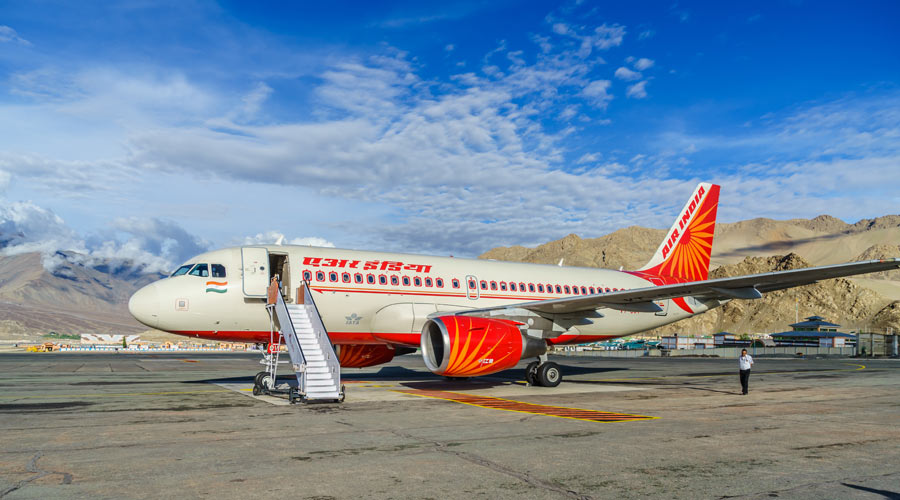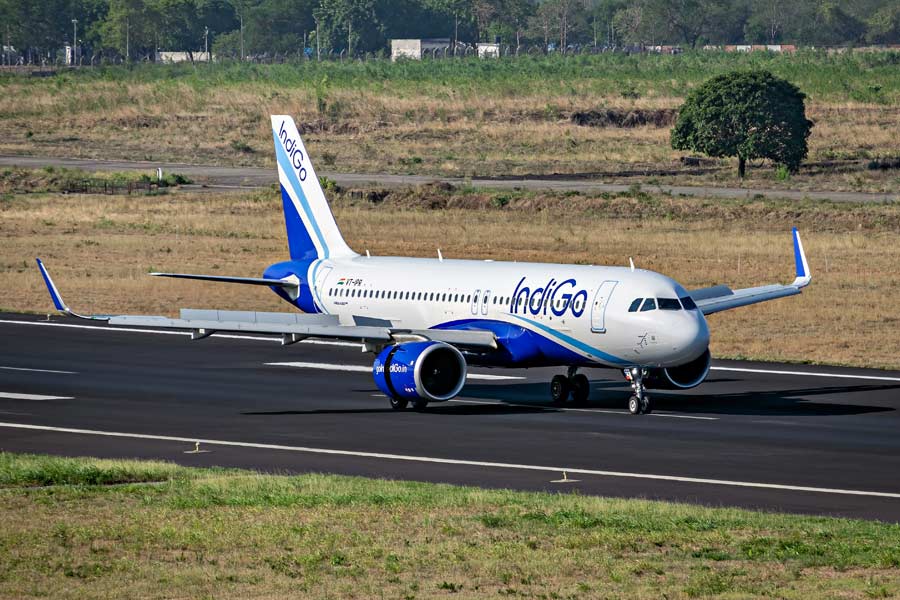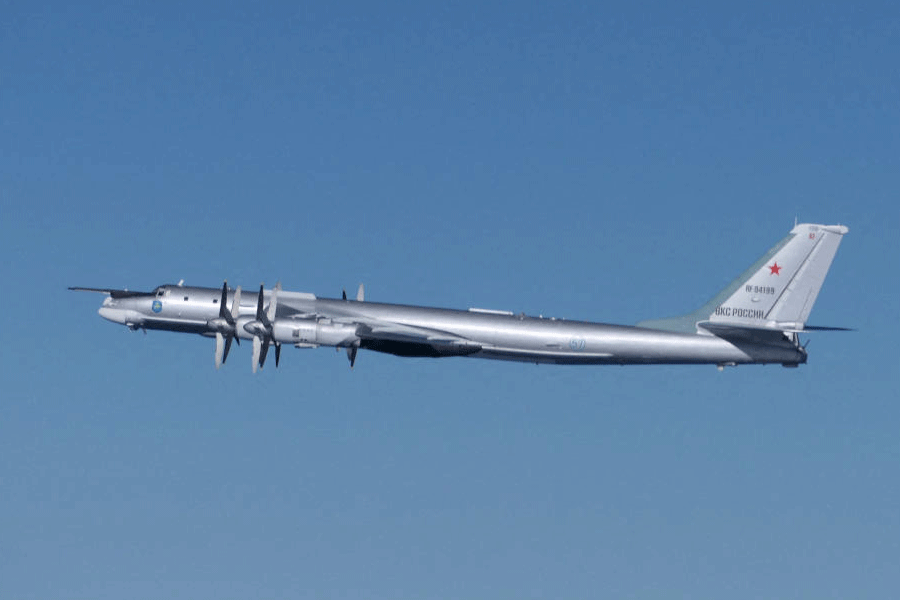It’s all change for the Maharajah. The $2.4-billion purchase deal is done and now Air India, the country’s highest-profile public sector company, is owned by the Tatas. “We are very happy to have Air India back in the Tata group. We look forward to working with everyone in creating a world-class airline,” says Tata Sons chairman N. Chandrasekaran.
Passengers flying the airline should start seeing changes starting this week, according to India Today Television. For starters, there will be a big stress on enhancing customers’ experience with passengers to be addressed as “guests.”
The new management has also told staff of the perennially late airline in a memo that on-time performance is crucial: “All endeavours (should be made) to close doors at D (departure) minus 10 minutes. Air India reported the lowest on-time-performance at 87 per cent while Indigo was the highest at 96 per cent, according to September data.
The airline also will start offering full-meal plans on some flights right away, including the Mumbai-Delhi and Mumbai-Bangalore routes. India Today Television says there'll also be pre-meal beverage trolley service in first- and business classes with high-ball and wine glasses and bar carts serving soft drinks in economy class. Passengers will be served on porcelain china in business and first-class and will be given melamine in economy.
Smart-up
Flight crews have also been ordered to be “smartly dressed, A staff note said “cabin crew are important brand ambassadors playing a critical role in Brand/Image building.”.
The upgraded service is all part of a makeover for the Maharajah which after nearly seven decades in state hands is winging its way back to its founder, the Tatas. The challenge, though, that lies ahead in turning around the airline ahead is formidable. Air India has been losing $2.7 million a day or close to $1 billion a year and the Tatas are taking over the airline at the worst possible time. Thanks to the pandemic and high fuel costs, India’s airlines are forecast headed for their biggest-ever loss of more than Rs 20,000 crore in this financial year to March. That’s 44 per cent more than Rs 13,853 crore the airlines haemorrhaged in the last financial year. This would push back the industry’s recovery beyond fiscal 2023, said a CRISIL Ratings analysis.

Air India CMD Vikram Dev Dutt welcomes Tata Sons Chairman Natarajan Chandrasekaran on his arrival at Air India office, in New Delhi. PTI.
Ageing fleet
Also, Air India’s fleet is ageing and new aircraft will have to be brought in one by one. Air India currently has 117 planes. Says an aviation industry expert: “They have to revamp the fleet one aircraft at a time.” In addition, while the staff is hugely experienced, they’ve become used to a culture of low expectations and will find it difficult to grapple with different, more exacting demands from the new owners.
Chandrasekar’s answer to this daunting scenario is that, “The airline’s golden years lie ahead.”
But there’s a legion of smaller problems. For instance, one of the airline’s unions is objecting to a reported new company circular ordering body mass index (BMI) and weight checks for cabin crew to be carried out pre-flight by so-called “grooming assistants.” The union says a “stressful BMI check… is bound to disturb crew's mental preparation through giving rise to flight safety issues.”
Indigo main competitor
Between all these airlines, the Tata Group now has 25 per cent of the Indian aviation market. But it’s up against the industry giant IndiGo which has a 60 per cent stake and is a formidable competitor. IndiGo will need to be vigilant against Air India as it has the most to lose in terms of domestic market share, analysts say.
Still, the Tata Group has deep pockets. Airline industry experts agree that revamping the airline will be a three-to-five-year task. Says one industry veteran: “There are no quick fixes. There will have to be a total revamp. The routes will have to be revamped and new aircraft gradually brought in. You should start looking at the airline six months from now.”
Airline CEO
Then there is the matter of who will lead Air India through these changes. The Tatas have to announce an airline CEO and he’ll have to assemble a team. Many expect the CEO to be from an international airline but if that happens they will need time to understand the Indian market complexities.
The group’s chairman, Chandrasekaran, is likely to be the new entity’s chairman and other Tata veterans like Bhaskar Bhat could be on the board.
An equally important question is how the Tata Group structures its aviation interests. Should it merge Air Vistara and Air India as they are both full-service airlines? The question that has to also be answered is whether there’s still a market for a full-service airline in India. The answer could well be no. Air Vistara has a good premium economy section but it’s not a money-spinner. In aviation, as in many other industries, India is an extremely price-sensitive market.
AirAsia, Air India Express
And, similarly, should it merge AirAsia India and Air India Express which are both low-cost players? Air India Express, which started out as a poor cousin to Air India, now has profitable low-cost routes to the Gulf and a fleet of relatively new planes. Together with AirAsia, it could become a strong player with good domestic and international routes. Another difficulty that will have to be resolved is that Air India Express flies Boeings and Air Asia has an Airbus fleet. For low-cost airlines, it’s essential to have a minimum of different plane types.
Merging these four airlines, if it’s to happen, also can’t be done overnight. Air Asia, which has a mountain of problems back in its home base in Malaysia, is keen to make its exit from India and a deal is understood to have been worked out. However, no payment has been made yet.
Singapore Airlines, the half-owner of Air Vistara, would probably like to get a strong foothold in the Indian market but it’s not cash-rich after almost two pandemic-struck years which have battered the aviation and tourism industries. In fact, Vistara has been operational for seven years and hasn’t been able to turn a profit yet. AirAsia India, started in 2014, also has yet to record a profit, and the purchase of Air India will be a test of Tata’s aviation management skills.
Office space
In the short term, the Tatas will also have to figure out where to seat its roughly 12,000 staff because Airlines House, Air India’s headquarters in Delhi and the prime location office at the Air India building at Nariman Point, stay with the government. However, it shouldn’t be difficult to hire co-working spaces. More, seriously, staff in Delhi are likely to be extremely unhappy about moving out of the government-owned colony where they’ve had subsidised housing for decades.
Air India’s biggest strength is probably its international routes and it can offer direct flights from North American cities like New York and San Francisco. In the past, would-be passengers have been deterred from flying Air India because of erratic timings and poor online services. If these issues are fixed, it shouldn’t be difficult to get passengers back in Air India’s seats.
Air India also has a strong opportunity to build its international routes because – in the wake of the pandemic – passengers are likely to prefer direct flights to what is called 5th and 6th-freedom flights which involve changing planes.
Gulf airlines
The airline will have to fight a huge battle with Gulf-based airlines like Emirates, Etihad, and Qatar Airways which have grabbed a large chunk of the Indian market and have flights to a huge number of Indian cities. Emirates, for instance, flies to nine Indian cities and Qatar
Airways flies to 13 Indian destinations. IndiGo, by contrast, has put very little effort into building an international market.
IndiGo, though, is the strongest rival. Any airline that wants to make it in the Indian market will first have to match IndiGo’s offerings and prices. “Charge one rupee more and you will lose passengers,” says an industry veteran.
Air India will also have another problem in the coming months: it will lose its numerous guaranteed government traffic links. Under existing government rules. All civil servants had to fly Air India whenever possible. The airline had also cornered almost all the Vande Bharat flights in recent months. Those comfort factors will now be gone as the carrier flies into the future.











